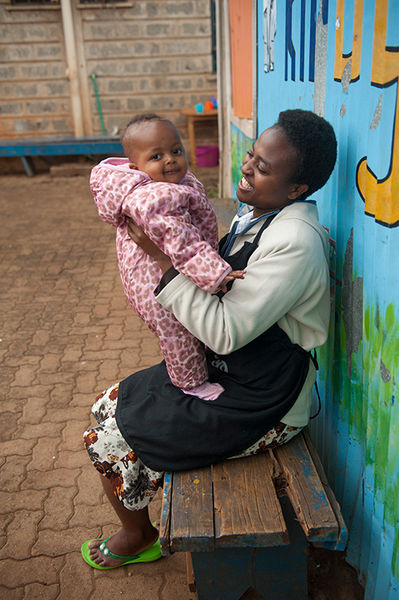A coin flip. If you live in sub-Saharan Africa, those are your chances of growing up in a family where members live on less than $1.90 per day, according to a new report on childhood poverty from Unicef and the World Bank.
Childhood poverty robs children of their futures. It’s a global problem, impacting children from Malawi and Tanzania to Missouri and Tennessee. That’s why it demands a global solution.
Fortunately, one intervention makes a demonstrable difference: Early childhood development programs. These efforts help kids acquire the skills they need to escape a life of poverty. Boosting funding for such programs is the moral choice – and an economically wise one, too.
Failing to invest in a skilled and healthy workforce is ultimately harming future economic growth. – Jim Kim, World Bank President
Early traumas lead to life-long health problems. By age 50, those who grew up in poverty are 83 percent more likely to be diagnosed with diabetes and 40 percent more likely to be diagnosed with heart disease than people who had a middle-class upbringing.
A rocky childhood damages people’s financial health, too. Across the globe, nearly 250 million children will see their lifetime incomes reduced by 26 percent, all because they were born into poor families, according to a series of articles in the leading health journal The Lancet.
When children are deprived of opportunity from birth, it affects not only their economic prospects, but their nation’s. Childhood poverty costs America up to $500 billion annually, as children wind up ill, imprisoned, or underemployed as adults. Globally, the World Bank has found that stunted children drag down GDP per capita by between seven and 10 percent.
Early childhood interventions level the playing field for underprivileged children. And they do so at a bargain price.
In the United States, disadvantaged children who participate in Head Start – the early childhood development program – enter kindergarten with bigger vocabularies and better foundational skills. That cuts the achievement gap between them and their more fortunate peers by 45 percent. The program also slashes child mortality.
Every dollar invested in early childhood development in the United States yields savings of up to $8.60, according to a recent White House study. Instead of becoming burdens to society, children who benefit from early childhood interventions become contributors. Alumni of the Head Start program include Shaquille O’Neal, former Health and Human Services Secretary Sylvia Mathews Burwell, and Rep. Loretta Sanchez (D-Calif.).
Investments in early childhood development programs in impoverished nations have yielded even more impressive results.

Kids in Mozambique who attend preschool increase their cognitive development scores by 87 percent. Their social competency, motor skills, and emotional maturity also surpass students who don’t attend preschool. They’re 22 percent more likely to enroll in primary school at the appropriate age. And once they’re in primary school, they spend 46 percent more hours studying each week than their peers who lacked similar opportunities.
But early childhood development programs can – and should – start much earlier than pre-school. The first few years of life literally craft the architecture of a child’s brain. About 700 new neural connections form every second, according to Harvard researchers.
That’s why World Bank president Jim Kim urged global leaders to boost funding for early child development interventions at the recent World Economic Forum in Davos. Kim warns that “Failing to invest in a skilled and healthy workforce is ultimately harming future economic growth.”
Those interventions ought to coach pregnant women and new parents on stimulation and responsive care – and build these trainings into routine maternal and child health services. My organization, the Conrad N. Hilton Foundation, has prioritized working with health systems in this effort. To date, our partners have supported 320,000 Sub-Saharan African children and their caregivers who are affected by HIV and AIDS.
All too often, early intervention programs are the only thing standing between bright kids and a bleak future. Offering these programs to more children, here and around the world, would ensure they have a chance to realize their full potential.